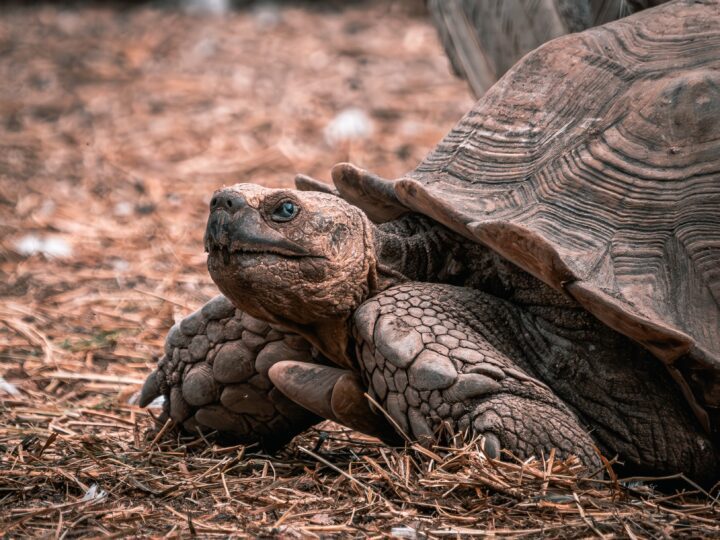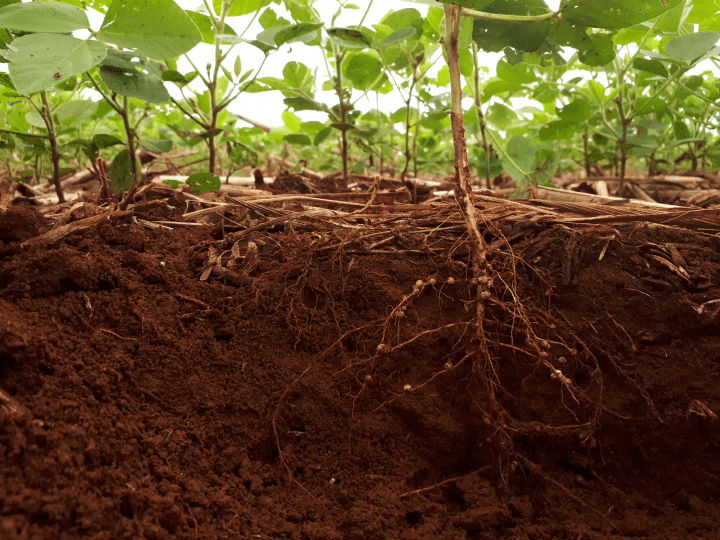Distribute Solids
Solids include resources such as food, seeds, spores, and leaves, which living systems must sometimes move to accomplish various activities such as pollinating, feeding their young, or building shelters. To effectively distribute solids, living systems must use strategies appropriate to the sizes and types of solids and the media in which they exist (air, water, or another medium). This may entail strategies beyond simply holding and carrying solids. For example, some seeds are carried by the wind to new locations for germination. Others–like the burdock plant’s hooked seeds–cling to animal fur to be transported.
Cooperate Within an Ecosystem
An ecosystem is a community of organisms (plants, animals, and microbes) interacting with one another and the nonliving components of their environment (such as air, water, and mineral soil). This interaction can be passive or active, and can cooperatively enhance the functioning of the ecosystem as a whole. For cooperation to contribute to maintaining communities within an ecosystem, it must be beneficial to at least some members of the community. Cooperation consists of symbiotic relationships, such as mutualism (in which two or more species in an ecosystem benefit) and commensalism (in which one species benefits and the effect on others is neutral). An example of a commensal relationship is that between bromeliad plants and trees: bromeliads live on trees without harming them. Bromeliads have mutualistic relationships with other species, including insects, frogs, and worms. The plants capture water in their base, forming a pond that these organisms join. The nutrients that these organisms excrete in their droppings nourish the bromeliad.
Regulate Climate
Individuals and ecosystems manage local atmospheric conditions, thus regulating local climates. The local scale refers to climates such as those found under a shrub or within a forest. This local climate is called a microclimate. Regulating local climate creates favorable conditions, such as increased humidity or less severe winds, and contributes to species diversity. Microclimate development occurs over time: just from their presence, a few species initially able to tolerate the local conditions start to modify those conditions, resulting in microclimates that support others. For example, plants that live in alpine areas are subject to strong ultraviolet light, drying winds, and freezing temperatures. By growing together into dense clusters, these plants create a favorable microclimate that supports survival of a diversity of species.
Manage Disturbance in a Community
When environmental conditions change, they can disrupt an ecosystem’s equilibrium. Excessive rain can cause flooding and drought can cause forest fires. An ecosystem must be resilient to such disturbances. Disturbances are unpredictable in location, size, and intensity, so ecosystems must be able to regrow and must have a variety of duplicate forms, processes, or systems that are dispersed in location. For example, a forest ecosystem can recover from fire because diverse organisms play different roles in different ways and in different locations. Many organisms can resprout or grow from seeds triggered by fire, and their dispersed distribution ensures that an entire population isn’t decimated. Though the recovered ecosystem may look totally different from the pre-fire one, the ecosystem as a whole remains healthy.
Generate Soil/Renew Fertility
An ecosystem can’t survive long without building up its soils and preventing them from being depleted of fertility. Organic matter, minerals, and other nutrients in soil support organisms, from microorganisms to the largest mammals. Raw soil consists of weathered minerals, such as silica. But organisms need more than minerals to survive, and minerals alone are poor at storing water needed by organisms. Therefore, soil has organic matter to support an ecosystem of organisms that, in turn, contribute more organic matter, make nutrients more accessible, and hold water. The dung beetle is an organism that enhances soil fertility. This beetle gathers and transports animal dung, feeds on it, buries it in the soil, and lays eggs on it. The dung provides its young with food when they hatch. At the same time, it adds nutrients and organic matter to the soil, benefitting the ecosystem as a whole.








